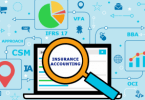05/18/2017 was a big day for insurance companies using IFRS accounting. IASB, International Accounting Standard Board has finally released the final standard, the IFRS 17, after years of preparation, delivering the first truly international IFRS standard to guide insurance contracts.
Highlights
From IFRS 4 to IFRS 17 – Let’s take a Look Back
Why IFRS 17 replaces IFRS 4?
What are the advantages of IFRS 17
What does the final release mean for insurance companies?
Can insurance companies apply IFRS17 before 01/01/2021
What are the main challenges for implementing IFRS 17
Software Companies are prepared to support IFRS 17
What is scope of IFRS 17
Which accounting model will be applied for IFRS
What is the consequence of the Building Block Approach & Variable fee approach
SAP Accounting for Insurance Contracts to solve IFRS 17 challenges
Where to find good information for the update
Update 09/2019 What’s new IFRS17?
The IFRS 17, which replaces the interim standard IFRS 4 will go into full force as from 01/01/2021. The latest decision by the IASB will affect 450 listed insurers who have a combined asset value of $13 trillion. The IFRS provides one accounting model to guide all insurance contracts that fall under the IFRS jurisdiction.
From IFRS 4 to IFRS 17 – Let’s take a Look Back
Looking back to the past, the IFRS 4, a predecessor of the IFRS 17, was released 13 years ago in March 2004; however, it came with significant disadvantages such as inconsistency, transparency and providing very little useful information, together with different value and profitability approaches. After several public consultations in 2007, 2010 and 2013, using discussion papers, comment letters, round tables, discussion forums and meetings, the IFRS released the first exposure draft for improvements in June 2013, inviting the public to make comments and suggest improvements to the draft. This then started the creation of the IFRS 17, which was issued on May 18th 2017, to help understand insurer’s risks and financial positions better.
Why IFRS 17 Replaces IFRS 4?
The IFRS 4, which serves as an interim standard comes with a couple of disadvantages, which the new IFRS 17 adresses. Under the IFRS 4, insurance companies could use different accounting regulations and accounting methods for similar insurance contracts in different countries, creating huge inconsistencies and incomparability. This made comparisons between insurers in the same industry or to other industries impossible or geographical locations difficult.
What are the advantages of IFRS 17
One big advantage with the IFRS 17 is its consistent framework. According to the IASB, the IFRS 17 is the first truly international IFRS Standard for insurance contracts, which will be measured at current value and on the obligation that will be created only by these contracts. Under the IFRS 17, insurers claims are settled by the time value of money of estimated payments; there will also be constant and readily available information about current and future profits from insurance contracts. This will also allow significant comparisons and reduce the usage of Non-GAAP measures, which refers to calculations made without reference to Generally Accepted Accounting principles.
What does the final release mean for insurance companies?
After a long wait since the release of the IFRS 4, and the IFRS 4 phase 2, the wait is finally over. Now insurers have up to to 3.5 years to implement the requirements of the new IFRS standard.
Can Insurance Companies apply IFRS 17 before 01/01/2021?
Yes, insurers can apply the IFRS but under some specific conditions. These conditions, which must apply before the 01/01/2021 deadline include the application of the IFRS 9 and the IFRS 15. Both standards, financial instruments and revenue contracts link directly to the IFRS 17.
What are the main challenges for implementing IFRS 17?
There are two main challenges to the implementation of the IFRS 17; one on the business side and the other one on the technical IT side.
Based on regulation, which affects the business side, the IFRS 17 requires base estimates that reflect the timing and estimated cash flows, where insurers also need to account for uncertainty as measured by the risk margin. Insurers who respect this margin will have more transparency in the reporting of their company’s financial statements.
Based on the technical IT-side, the big challenge is to assemble and collect all the necessary input data required for doing specific insurance accounting. Insurers operate in a challenging IT-landscape, with significantly different systems applying to different departments, which means that all available data is spread out through the company. A lot of insurance companies have distinct departments, with little or no data exchange happening. After the implementation of the IFRS 17, departments will have to collaborate and share data.
Software Companies are prepared to support IFRS 17
Insurers must implement a myriad of IT solutions in order to fulfill the requirements of the IFRS 17. Insurance companies can choose from a wide range of standard software or start an in-house software development project, where they can customize the software to their operations. One of the popular providers of software is SAP with the product family of SAP Insurance Analyzer (SAP-FS-IA) including the product Accounting for Insurance Contracts and Solvency II.
What is scope of IFRS 17?
All types of insurance contracts will apply IFRS 17 like life-insurance, non-life insurance as well as direct insurance and re-insurance contracts.
Which accounting model will be applied for IFRS 17?
The accounting models for IFRS17 cover all relevant accounting aspects. The main core model is called ” General Model” with the Building Block Approach, consisting of several features like present value of future cash flow, Contractual Service Margin, Risk adjustment for non-financial risks and discounting. The variation of the general model, which is called “Variable Fee Approach” is used for insurance contracts with direct participation features. Mainly for short-duration contracts an simplified approach which is called (Premium Allocation Approach) can be used.
What is the consequence of the Building Block Approach & Variable fee approach?
Estimated sets of cashflows are revaluated on a current basis each period valuation, which can be on monthly or quaterly basis. The estimated unearned profit also known as “Contractual Service Margin” (CSM) is recognised over remaining life of contract.
Applying the variable fee approach (VFA) contractual service margin is modified by changes of fair value of the participating feature/ underlying item. Thus, those changes of fair value of the underlying item are not recognised in profit and loss statement of the occuring period. They are recognised over the remaining coverage period.
SAP Accounting for Insurance Contracts to solve IFRS 17 challenges
There are plenty of technical it-solutions available on the market to solve the challenges caused by IFRS 17, e.g. SAP Insurance Analyzer. In this video one of the most famous provider SAP is presenting the solution called SAP Accounting for Insurance Contracts.
Where to find good informations for the update of IFRS 17?
IASB and several consulting companies published a number of whitepapers, which you can find at following links:
- Insight and detailed analysis on the impact of IFRS 17 Insurance Contracts by KPMG
- IASB issues IFRS 17 by EY
- IFRS 17: Redefining insurance accounting by PWC
- IFRS 17 implementation support page by IASB
- IFRS 17 project summary by IFRS
- IFRS Standards Fact Sheet by IFRS
- IFRS 17 Insurance Contracts Project Page by IFRS
- IFRS 17 Advisor Alert by Grant Thornton
Hint: Even IFRS Board does not provide a formal technical enquiry service, stakeholders can send implementation questions relating to IFRS 17 via email to insurancecontracts@ifrs.org!
Update 09/2019 What’s new IFRS17?
There are several updates available for IFRS 17. IASB published a new exposure draft with amendments to IFRS 17. Maybe the important amendment is the effective date. The effective date should be changed from 2021 to 2022 for IFRS17. Moreover new dates for IFRS4 and IFRS9.
The draft includes also 2 additional scope exclusions. The company would be permitted to apply IFRS 9, instead of IFRS 17, to loan contracts that meet specified criteria; and required to apply IFRS 9, instead of IFRS 17, to credit card contracts that meet specified criteria.
Moreover, the Allocation of acquisition costs to expected contract renewals should be amended.
Also, an amend is the attribution of profit of services relating to investment activities, the extension of the risk mitigation option, and the reduction of accounting mismatches for reinsurance. IASB also proposes to simplify the balance sheet presentation. Portfolios of insurance contracts should be presented instead of groups of insurance contracts. The board also proposes to add 3 simplifications to IFRS 17 for companies when applying the Standard for the first time – business combinations – risk mitigation from transition date and risk mitigation and fair value transition approach. You can find the documentation of the IFSR 17amendments here.








Valuable info. Fortunate me I found your website unintentionally, and I am stunned why this twist of fate did not took place
earlier! I bookmarked it.